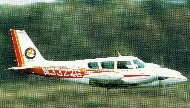Manifold Pressure Indicator overhaul
4 posts
• Page 1 of 1
Manifold Pressure Indicator overhaul
My MP Indicator is reading around 1 inch low, does anyone know where I can send this off to get overhauled, or a good replacement one? I tried with both Mid-Continent and Aero-Mach, neither one of them can do the work on them. It is an AN5770-1, original indicator.
Kory
Omaha, NE
PA-24-250 N7836P
Omaha, NE
PA-24-250 N7836P
- Kory Kearney
- Posts: 12
- Joined: Thu Oct 13, 2011 7:31 pm
Re: Manifold Pressure Indicator overhaul
Kory,
I've had good success with Air Parts of Lock Haven on original Comanche stuff - haven't done this one, but I think it is worth calling them. They did a really nice job on my twin's CHT probes and gauge and re-calibration and they just did an excellent job on our original air speed gauge after another shop said replace it. http://www.airpartsoflockhaven.com/ Hope this helps.
Kindly post what happens as this may be in our future. Thanks.
I've had good success with Air Parts of Lock Haven on original Comanche stuff - haven't done this one, but I think it is worth calling them. They did a really nice job on my twin's CHT probes and gauge and re-calibration and they just did an excellent job on our original air speed gauge after another shop said replace it. http://www.airpartsoflockhaven.com/ Hope this helps.
Kindly post what happens as this may be in our future. Thanks.
Pat
Patricia Jayne (Pat) Keefer ICS 08899
PA-39 #10 Texas
Patricia Jayne (Pat) Keefer ICS 08899
PA-39 #10 Texas
-

N3322G - ICS member

- Posts: 1911
- Joined: Thu May 08, 2008 1:58 pm
- Location: Fort Worth, Texas area
Re: Manifold Pressure Indicator overhaul
Here's something for you to try if you haven't already. Take the guage out of the panel. If you look in the hole where the vacuum line connects, you should see a small screw with a slot in it. Remove that screw and see if your manifold guage indicator returns to normal. That screw serves as a damper to manifold variances. In other words it stops the needle from dancing around. If your engine is in good condition, there shouldn't be a lot of needle flucuation anyway, so I would leave the screw out of the line, and see what happens. If everything works ok, then forget about the screw and fly on. If there is a lot of needle bounce, put the screw back in. You'll have to experiment to see where to set it. Too tight and the guage won't respond. Too loose, and you won't damp out the oscillations.
If this cures your problem, the reason it occured in the first place is oil, carried along in the air from the engine, created a hydraulic seal in the threads, blocking the return of normal air pressure.
If you want or need to replace the guage, you might look for a guage from a twin that has one side that is inoperative. The reason is that those guages have a much bigger scale, because they only measure to 35 inches, rather than 50 inches. You'll never ever see anything close to 35 inches of manifold pressure, let alone 50. With the expanded scale, it's a lot easier to set exactly what you want for mp. If you find one, have the shop remove the needle for the inop side. Then you're all set. Just an idea for you to consider. I did that years ago and really like the way it has worked out.
Dave Gitelman
If this cures your problem, the reason it occured in the first place is oil, carried along in the air from the engine, created a hydraulic seal in the threads, blocking the return of normal air pressure.
If you want or need to replace the guage, you might look for a guage from a twin that has one side that is inoperative. The reason is that those guages have a much bigger scale, because they only measure to 35 inches, rather than 50 inches. You'll never ever see anything close to 35 inches of manifold pressure, let alone 50. With the expanded scale, it's a lot easier to set exactly what you want for mp. If you find one, have the shop remove the needle for the inop side. Then you're all set. Just an idea for you to consider. I did that years ago and really like the way it has worked out.
Dave Gitelman
- DAVEG24
- ICS member

- Posts: 754
- Joined: Mon Feb 21, 2000 4:07 pm
Re: Manifold Pressure Indicator overhaul
No joy on the damper, but thanks for the tip. I had read about that before, but I didn't realize that screw was actually down inside where it was. I called and talked with air parts of lockhaven, they can overhaul it for $170 but it will take close to a month to get the thing back. Aircraft Spruce has a few different ones for sale that don't cost much more then overhauling mine, so that is looking like a pretty decent option, but I'm not sure if they are FAA PMA'd or not...
-Kory
-Kory
Kory
Omaha, NE
PA-24-250 N7836P
Omaha, NE
PA-24-250 N7836P
- Kory Kearney
- Posts: 12
- Joined: Thu Oct 13, 2011 7:31 pm
4 posts
• Page 1 of 1
Return to Maintenance - General
Who is online
Users browsing this forum: No registered users and 35 guests
